In the ever-evolving landscape of digital tools and productivity software, Google Workspace has emerged as a popular suite for businesses, educators, and individuals seeking an integrated cloud-based solution. However, while Google Workspace offers a range of versatile tools, it may not always align perfectly with every user’s specific needs or preferences. This is where exploring Google Workspace alternatives becomes essential. From project management to design, time tracking, and even automation, there exists a diverse array of software solutions, each offering unique features and benefits.
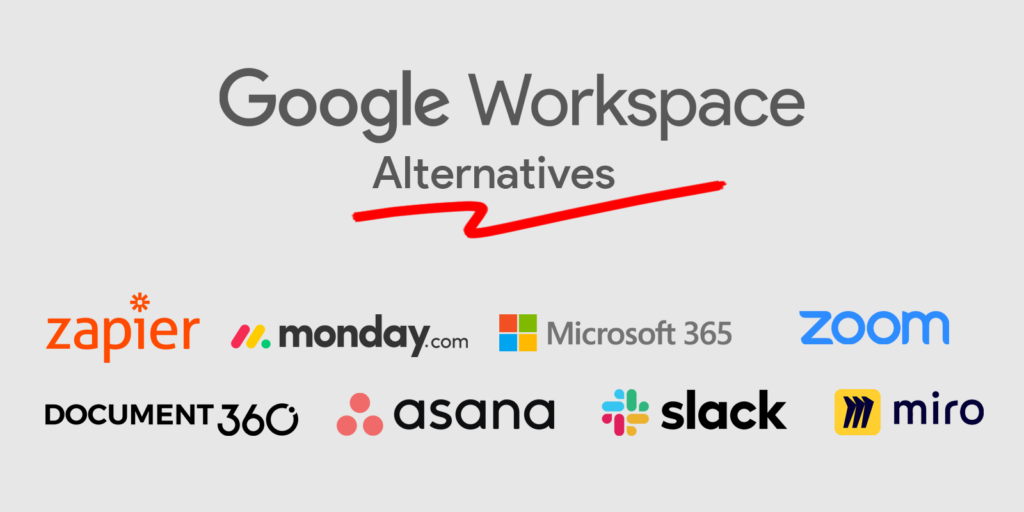
In this article, we delve into some of the top alternatives to Google Workspace. We’ll explore their key features, advantages, and ideal use cases, helping you determine which tools best fit your unique workflow and organizational requirements. Whether you’re part of a small team, a large corporation, or working solo, understanding these alternatives will empower you to optimize your digital toolkit for peak efficiency and productivity.
So here is the list of all great workspace alternatives for 2024.
1. Microsoft 365
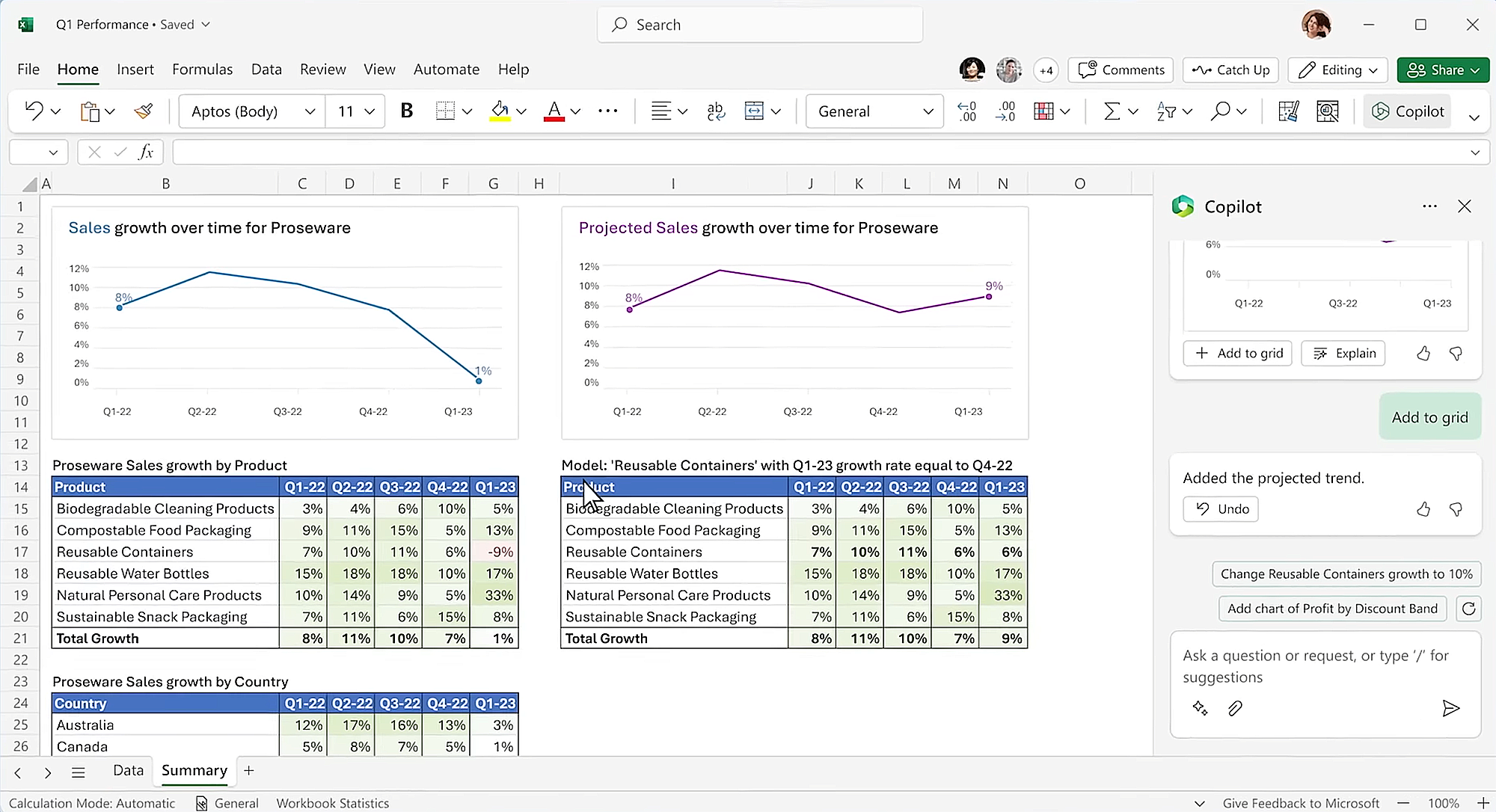
Microsoft 365 (formerly Office 365) is a direct competitor and an effective and efficient replacement for Google Workspace for 2024. Microsoft 365 is a comprehensive suite of productivity tools from Microsoft. It includes well-known applications like Word for document processing, Excel for spreadsheets, PowerPoint for presentations, and Outlook for email and calendar management. Additionally, it provides cloud storage solutions with OneDrive, collaboration tools like Teams for communication and collaboration, and various business applications such as SharePoint and Access. This suite is designed to cater to a wide range of business needs, from basic document creation to complex collaborative projects and communication.
Advantages
One of the key strengths of Microsoft 365 is the deep integration and familiarity of its applications. These tools are often considered industry standards, especially in corporate environments. Its comprehensive suite covers everything from document creation to email management, collaboration, and cloud storage.
Ideal Use Case
Microsoft 365 is well-suited for businesses and individuals who rely on robust, feature-rich productivity tools for document creation, data analysis, presentations, and communication. It’s also ideal for organizations that prioritize deep integration with Windows and other Microsoft services.
Pricing
- Business Basic: $6.00/user/month
- Business Standard: $12.50/user/month
- Business Premium: $22.00/user/month
- Microsoft 365 Apps for Business: $8.25/user/month
Why Choose Over Google Workspace?
While Google Workspace is known for its simplicity and cloud-native approach, Microsoft 365 offers a more feature-rich and comprehensive suite of tools. It’s particularly advantageous for those who require advanced functionalities in word processing, spreadsheets, and presentations. Additionally, Microsoft Teams provides a strong alternative to Google Meet, with extensive features for communication and collaboration.
2. Monday
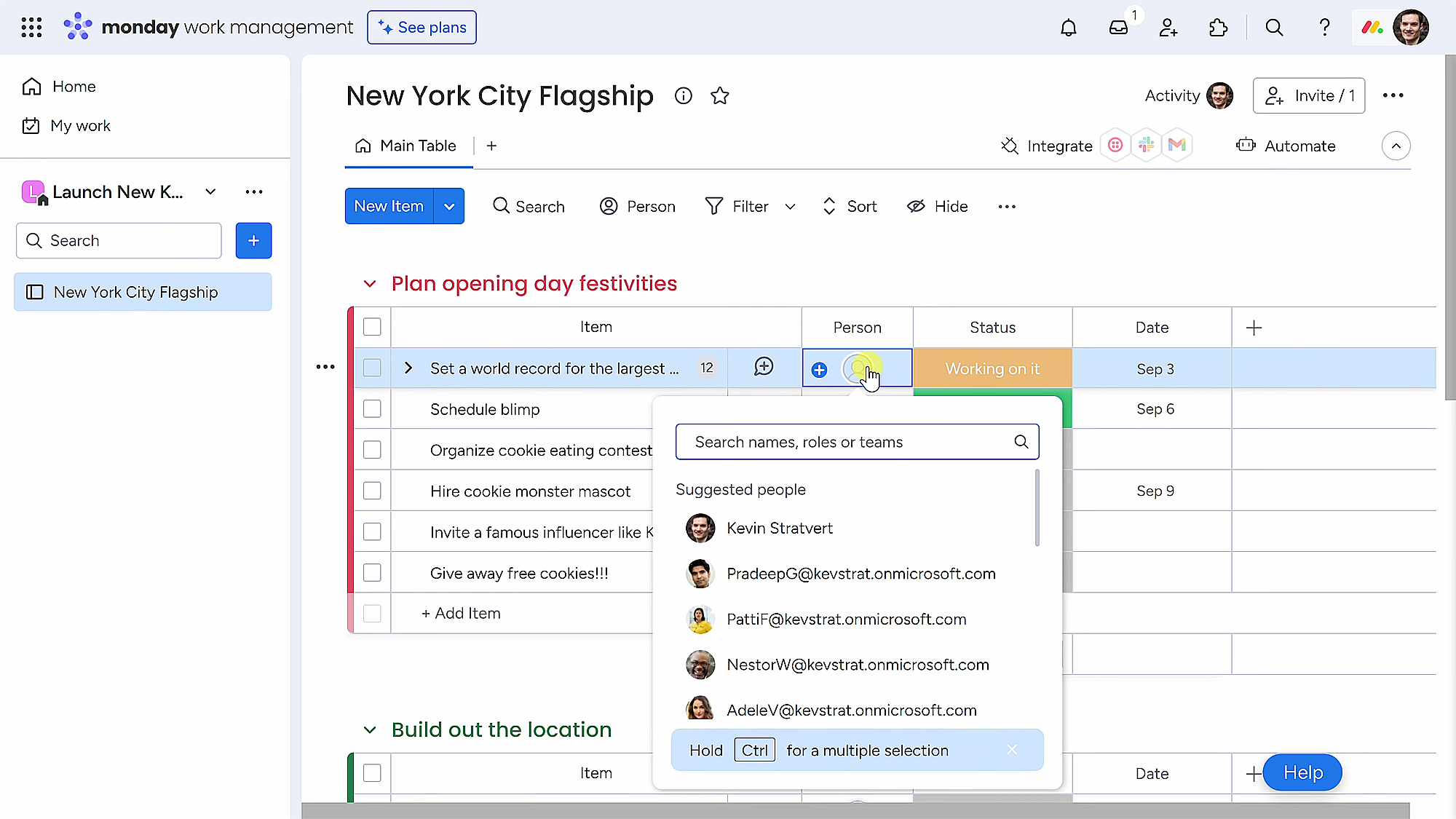
Monday stands out with its highly customizable boards that can be adapted to manage any project or workflow. It serves as an excellent substitute for Google Workspace for 2024. It offers solutions like project management for streamlined workflow, workflow automation to reduce manual tasks, CRM and sales tracking for customer engagement, marketing campaign tracking for marketing teams, and tools for managing remote work effectively. It also proposes integration with numerous third-party tools, and a variety of visualization options like Kanban boards, Gantt charts, and calendars.
Advantages
Its strength lies in its ability to manage complex projects with multiple moving parts. The platform is user-friendly, promoting collaboration through shared boards and real-time updates.
Ideal Use Case
Monday.com is particularly beneficial for teams needing a flexible project management tool that can adapt to various workflows, from marketing campaigns to software development projects.
Pricing
- Individual: Free forever (limited features)
- Basic: Starting at $8 per seat/month
- Standard: Starting at $10 per seat/month
- Pro: Starting at $16 per seat/month
Why Choose Over Google Workspace?
While Google Workspace provides basic project management tools, Monday.com offers a more advanced, all-encompassing solution tailored to intricate project management needs.
3. Asana
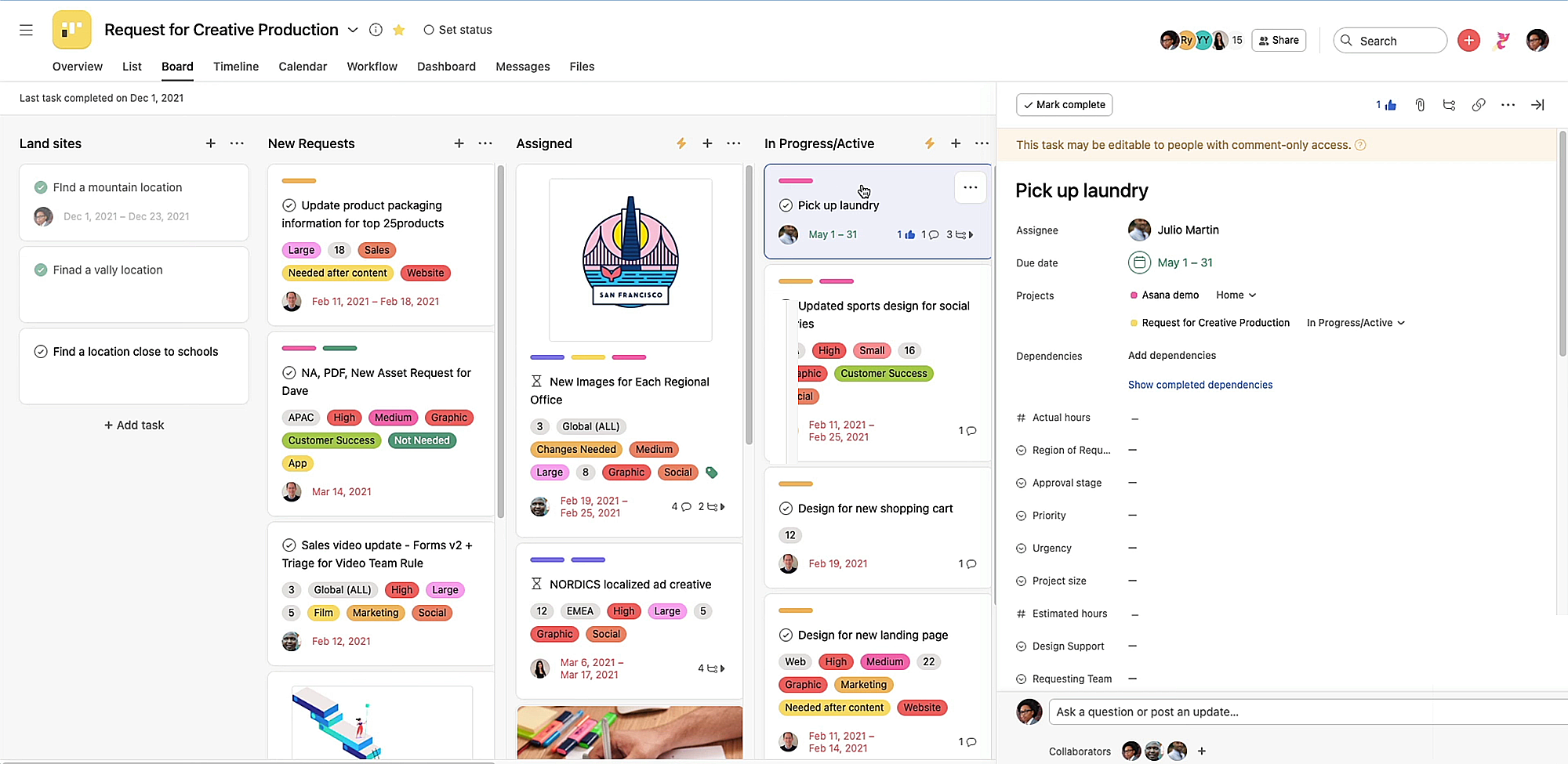
Asana offers a compelling alternative to Google Workspace. It is known for its task-centric design, allowing teams to create, assign, and track tasks efficiently. It offers features like custom fields, dependencies, and milestones. The platform also provides powerful reporting tools and the ability to create custom templates. Asana specializes in task management to organize and prioritize work, comprehensive project management tools, a workflow builder for custom workflows, detailed reporting for insights, and calendar and timeline views for better scheduling and planning.
Advantages
Asana’s intuitive interface and robust task management capabilities make it easy for teams to stay organized and on track. The platform’s focus on collaboration and communication helps ensure that everyone is aligned on their tasks and deadlines.
Ideal Use Case
Asana is well-suited for teams that need a comprehensive system to manage tasks and projects, particularly where detailed tracking and reporting are essential.
Pricing
- Basic: Free (limited features)
- Premium: $10.99 per user/month (billed annually)
- Business: $24.99 per user/month (billed annually)
Why Choose Over Google Workspace?
Asana offers a more specialized and detailed approach to project management compared to Google Workspace, making it a better choice for teams whose primary focus is on managing tasks and projects efficiently.
4. Document360
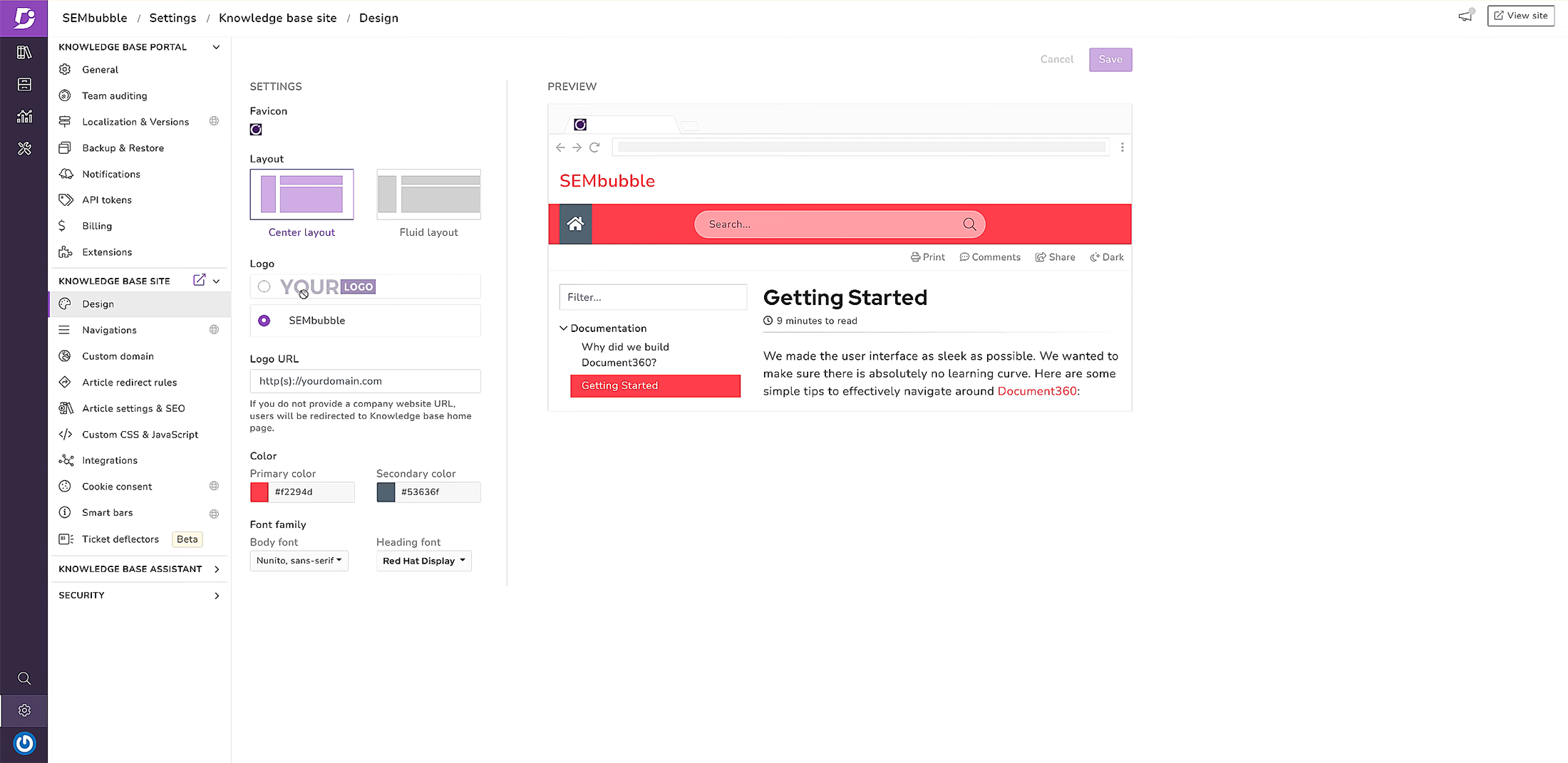
Document360 offers a suite of tools for creating a robust knowledge base, including an intuitive Markdown editor, version control, category management, and a powerful full-text search. It also provides analytics to understand user engagement with your documentation. It is a platform for creating and managing a knowledge base, offering a self-service support portal, version control, and backup for documentation, analytics, and reporting to gauge user engagement and an internal knowledge repository for teams. All these features make Document360 stands out as a prime choice over Google Workspace in 2024.
Advantages
This platform excels in creating a centralized, easily navigable, and scalable knowledge repository. Its focus on documentation means it is packed with features specifically designed for creating, organizing, and maintaining a comprehensive knowledge base.
Ideal Use Case
Document360 is ideal for organizations that need to create a detailed, easily accessible knowledge base for customers or internal use, such as for software documentation or company policies.
Pricing
- Free plan: $0 lifetime access
- Standard: $124 per project/month
- Professional: $248 per project/month
- Business: $331 per project/month
- Enterprise: $497 per project/month
Why Choose Over Google Workspace?
Google Workspace does not specialize in knowledge base management. Document360 fills this gap with its dedicated, feature-rich platform for creating and maintaining a structured and efficient knowledge base.
5. Miro

Miro is a robust solution, rivaling Google Workspace as an alternative. provides an expansive digital whiteboard space with tools for brainstorming, diagramming, and creating mind maps. It includes templates for various use cases, such as user story maps, flowcharts, and agile workflows, and integrates with many popular tools like Slack and Jira. It focuses on online collaborative whiteboarding for team brainstorming and ideation, tools for managing agile workflows, resources for strategy and planning sessions, and specialized tools for research and design teams.
Advantages
Miro’s interactive and visual nature makes it perfect for collaborative sessions. It supports real-time collaboration across teams, making it ideal for remote and distributed teams.
Ideal Use Case
Miro is particularly useful for teams that rely on visual collaboration and brainstorming, such as design teams, project managers, and agile development teams.
Pricing
- Free: $0 (limited features)
- Starter: $8 per member/month
- Business: $16 per member/month
Why Choose Over Google Workspace?
Miro offers a more immersive and interactive collaborative experience than Google Workspace. It’s specifically designed for visual teamwork, which can be crucial for creative and planning processes.
6. Figma

Figma is a web-based interface design tool that offers collaborative design, prototyping, and code generation capabilities. It emerges as a strong competitor against Google Workspace. It allows multiple users to work on a design simultaneously and provides features like constraints and an asset library. It allows multiple team members to work on a design simultaneously. It includes a design system for maintaining consistency across projects and a powerful vector graphic editor for detailed design work.
Advantages
Figma’s real-time collaboration feature sets it apart from many traditional design tools. It’s highly intuitive, making it accessible for both professional designers and those new to design. The tool’s ability to integrate with other platforms enhances its versatility.
Ideal Use Case
Figma is ideal for design teams working on UI/UX projects, web design, and app development, particularly when collaboration between multiple stakeholders is crucial.
Pricing
- Free: $0
- Professional: $12 per editor/month (billed annually) or $15 month-to-month
- Organization: $45 per editor/month
- Enterprise: $75 per editor/month
Why Choose Over Google Workspace?
While Google Workspace offers basic drawing and design tools, Figma provides a specialized, professional-grade design environment with superior collaboration features suited for detailed design work.
7. Time Doctor
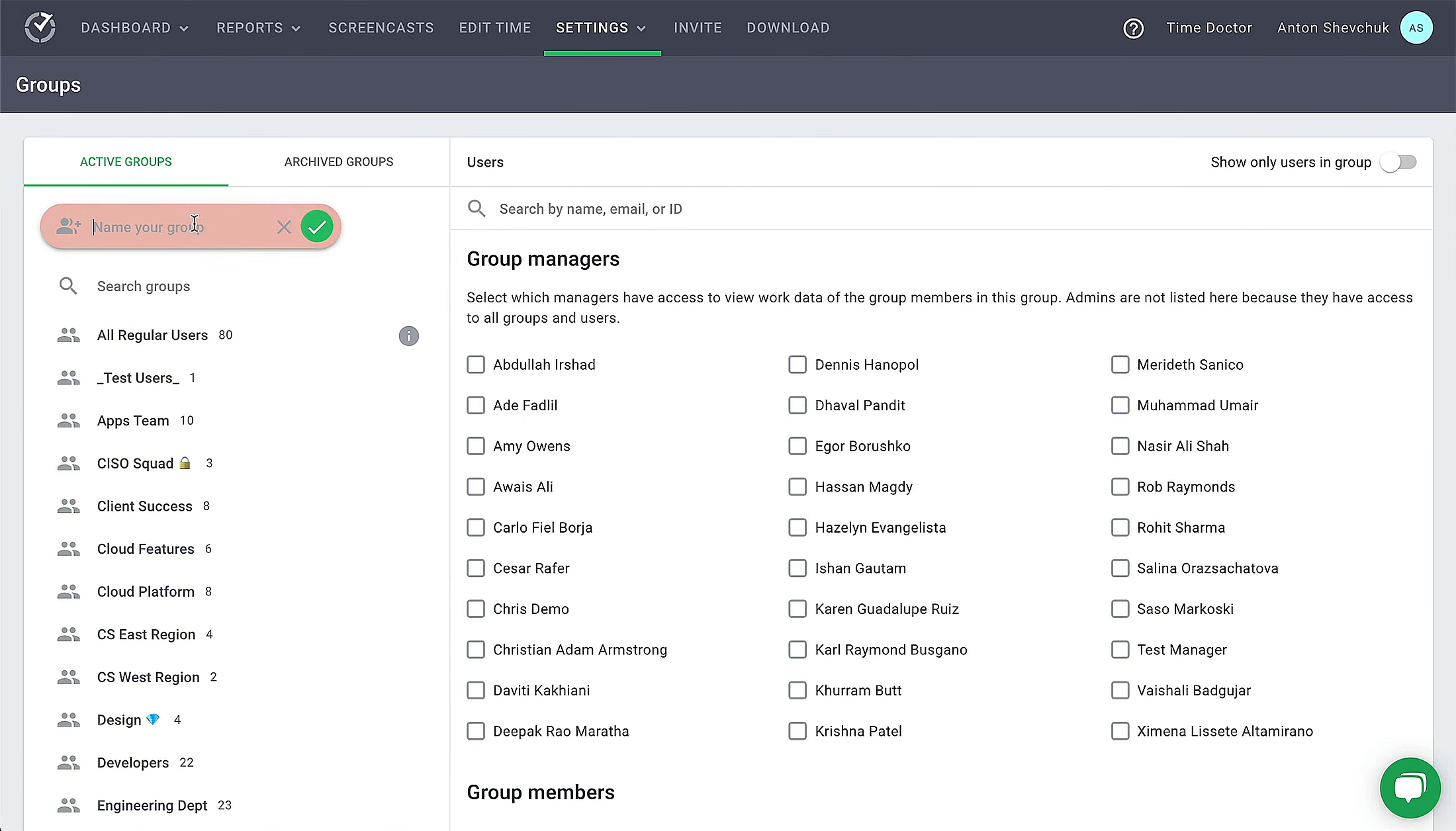
Time Doctor is the little expensive alternative to Google Workspace but worth paying for. It is a time-tracking and productivity management tool. It offers features like detailed analytics, time tracking to monitor work hours, screenshot recording for accountability, web, and app usage tracking to analyze productivity, detailed reporting for insights into time spent on projects, and payroll integration for streamlined payment processes.
Advantages
Time Doctor helps in enhancing productivity by providing insights into how time is spent. It’s particularly effective for managing remote teams, offering accountability, and ensuring that work hours are used efficiently.
Ideal Use Case
Time Doctor is suitable for organizations with remote or distributed teams, freelancers, and anyone who needs to accurately track and optimize their work time.
Pricing
- Basic: $5.9 user/month (billed annually) or $7 month-to-month
- Standard: $8.4 user/month (billed annually) or $10 month-to-month
- Premium: $16.7 user/month (billed annually) or $20 month-to-month
Why Choose Over Google Workspace?
Google Workspace lacks advanced time tracking and productivity analysis tools, making Time Doctor a valuable addition for organizations focused on optimizing employee productivity and managing remote work.
8. Slack

Slack is a communication platform designed for teams. It provides organized chat rooms (channels) for different topics, direct messaging for private conversations, voice and video calls for real-time discussions, file sharing and collaboration, and integration with numerous other tools to centralize workflow communications. Overall, Slack delivers features that make it a worthy alternative to Google Workspace in 2024.
Advantages
Slack’s streamlined approach to team communication helps reduce email overload. Its channels can be organized by topic, project, or team, making information easy to find and share. The platform also supports video and voice calls.
Ideal Use Case
Slack is particularly effective for teams that require a centralized communication platform to streamline and organize their conversations and collaborations.
Pricing
- Free: Limited features
- Pro: $8.75/user/month (billed monthly) or $7.25/user/month (billed annually)
- Business+: $15/user/month (billed monthly or annually)
Why Choose Over Google Workspace?
Although Google Workspace includes communication tools like Gmail and Google Chat, Slack offers a more focused and organized environment specifically designed for team communication and collaboration.
9. Nulab
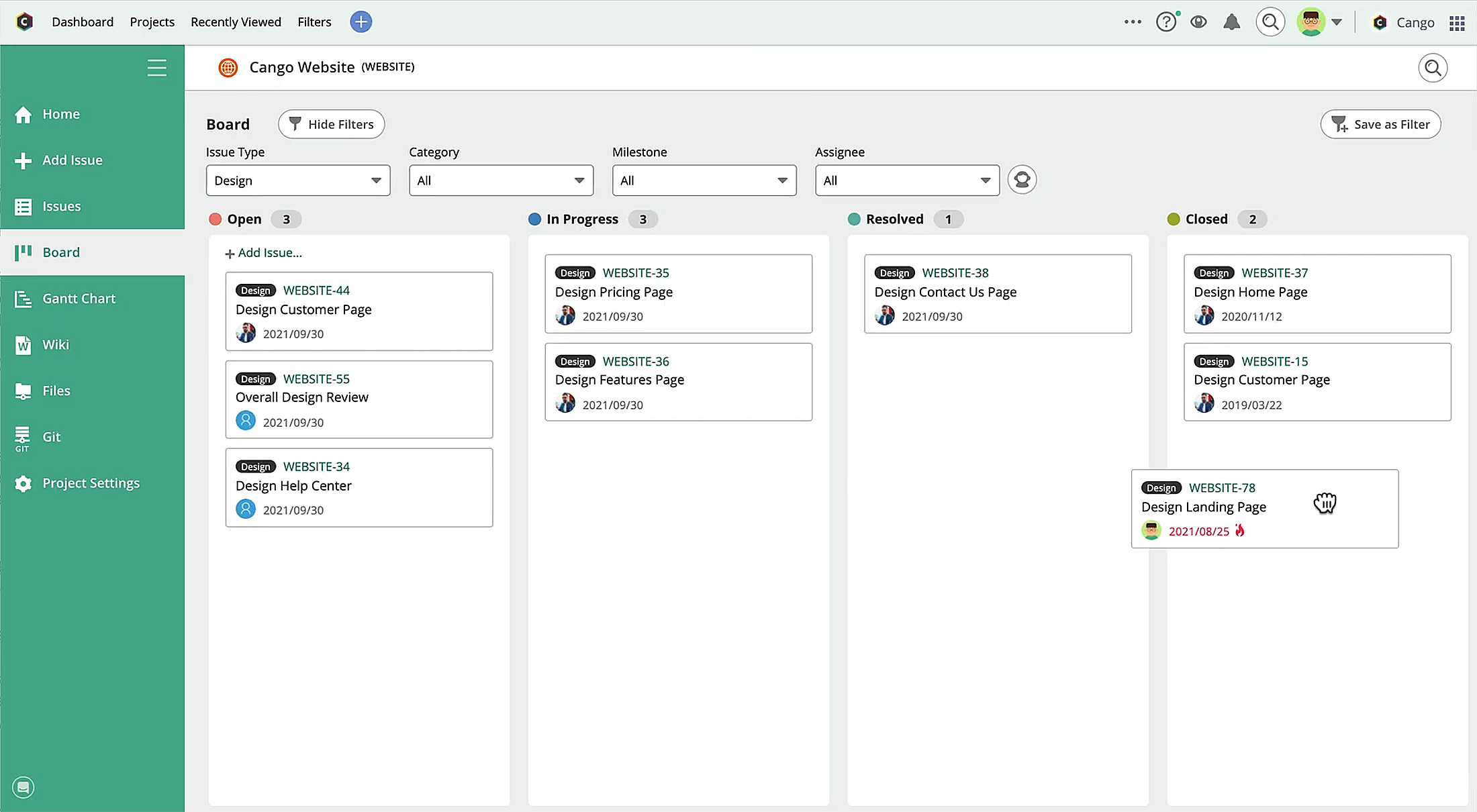
Nulab is an effective and efficient replacement for Google Workspace that offers a range of collaborative tools for 2024. This includes Backlog for project management and bug tracking, Cacoo for creating diagrams and visual project plans, and Typetalk for team communication. Nulab’s solutions focus on enhancing team collaboration through effective project tracking, visual planning tools, and seamless communication.
Advantages
Nulab’s strength lies in its integrated suite, offering diverse tools that cover various aspects of team collaboration and project management. Each tool is designed to enhance team productivity and collaboration.
Ideal Use Case
Nulab is ideal for teams that need a comprehensive set of tools to manage projects, communicate effectively, and collaborate on diagrams and designs.
Pricing
- Free: $0/month (up to 10 users)
- Starter: $35/month (up to 30 users)
- Standard: $100/month (unlimited users)
- Premium: $175/month (unlimited users and projects)
Why Choose Over Google Workspace?
Google Workspace offers a broad range of tools, but Nulab provides specialized solutions in project management, diagramming, and communication, making it a more tailored choice for teams needing these specific functionalities.
10. Friday

Friday is a workspace productivity tool designed to enhance team coordination and individual focus. It provides a comparable, if not better, experience than Google Workspace. It integrates with various work tools to centralize updates and tasks, offers customizable check-ins and status updates to keep teams aligned, provides a planner to help users organize their workdays, and features goal tracking to monitor progress on objectives. Friday aims to streamline communication and reduce the need for meetings, making it easier for teams to stay informed and focused on their work.
Advantages
Friday’s strength lies in its ability to consolidate work updates, goals, and tasks in a single dashboard, making it easier to track progress and maintain alignment across teams. The platform emphasizes transparency and accountability, which are crucial in remote work environments.
Ideal Use Case
Friday is particularly beneficial for remote teams or any team looking to improve the organization and visibility of their work. It’s also useful for managers who need to keep track of team progress without micromanaging.
Pricing
- Free: $0
- Individual: $4/month per person (billed annually)
- Team: $6/month per person (billed annually), $8 per user billed monthly
- Company: $100/month+ (Contact for a personalized quote)
Why Choose Over Google Workspace?
While Google Workspace offers communication and collaboration tools, Friday provides a more focused solution for managing remote work, integrating various aspects of work into one platform, and enhancing team alignment and productivity.
11. Zapier

Zapier is an online automation tool that connects your favorite apps, such as Gmail, Slack, Mailchimp, and more than 3,000 others. It enables the creation of automated workflows (Zaps) that pass information between apps, automating repetitive tasks without coding or relying on developers to build the integration. Key solutions include workflow automation across different applications, task automation to save time on repetitive tasks, and the ability to create complex workflows with multi-step Zaps. Zapier is designed to increase productivity by automating tasks and integrating various apps used in business processes. Overall, a great Google Workspace alternative.
Advantages
The primary benefit of Zapier is its ability to create workflows (Zaps) that automate parts of your business or personal tasks. This automation can save time and reduce the need for manual entry, increasing efficiency and productivity.
Ideal Use Case
Zapier is ideal for businesses and individuals looking to automate workflows between different applications. It’s particularly useful for those who use multiple online services and want to streamline their processes without technical expertise.
Pricing
- Free: $0 (100 tasks/month)
- Starter: $19.99/month (billed annually)
- Professional: $49/month (billed annually)
- Team: $69/month (billed annually)
Why Choose Over Google Workspace?
Google Workspace allows for some level of automation within its suite of products, but Zapier extends this capability significantly, allowing for integration and automation across a much broader range of applications and services.
12. GitLab

GitLab is a completely different alterative to Google Workspace. It is an all-in-one DevOps platform that provides a comprehensive range of tools for software development and lifecycle management. It offers Git repository management for source code control, CI/CD (Continuous Integration/Continuous Deployment) pipelines for automated testing and deployment, issue tracking for managing tasks and bugs, and a wiki for documentation. GitLab’s solutions are geared towards improving the efficiency of software development processes, promoting collaboration among development teams, and streamlining the entire software development lifecycle.
Advantages
The integration of various stages of development into one platform is GitLab’s primary strength. This integration helps streamline workflows, reducing cycle times, and enhancing collaboration among development teams.
Ideal Use Case
GitLab is ideal for software development teams looking for an all-in-one platform for managing software development projects, from coding and testing to deployment and monitoring.
Pricing
- Free: $0 (limited features)
- Premium: $29/user per month or billed annually at $348
- Ultimate: $99/user per month or billed annually at $1188
Why Choose Over Google Workspace?
Google Workspace doesn’t cater specifically to software development workflows. GitLab, with its integrated DevOps tools, offers a more specialized solution for software project management and collaboration.
13. Toggl
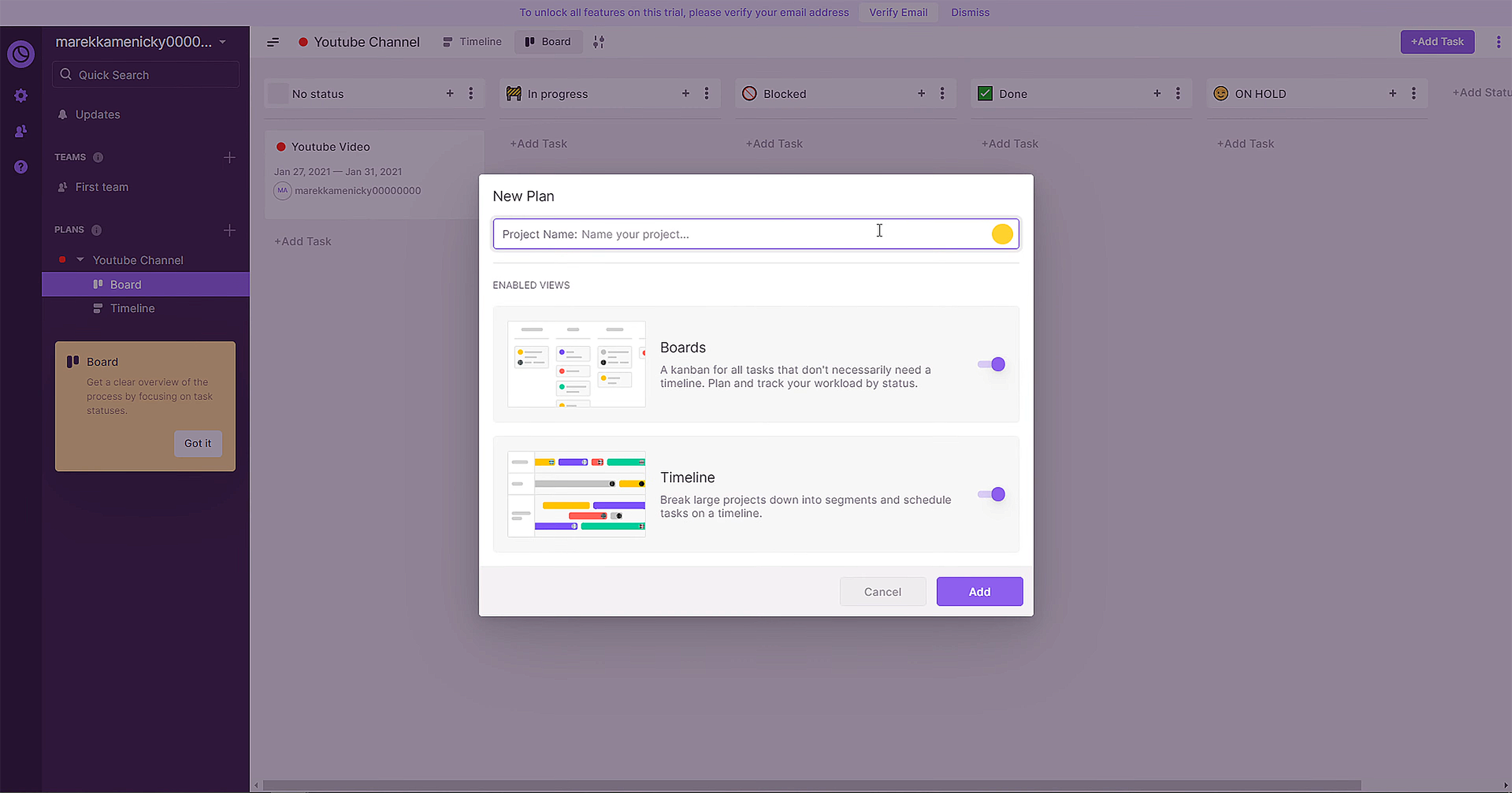
Toggl offers solutions focused on time tracking and productivity improvement. As of 2024, It provides a comparable, if not better, experience than Google Workspace. Its key product, Toggl Track, is a time-tracking tool that allows users to monitor how much time they spend on various tasks and projects. Toggl Plan provides project planning and task management features, and Toggl Hire offers skills-based hiring tools to help businesses find qualified candidates quickly. Toggl’s suite of products is designed to enhance productivity through effective time management, efficient project planning, and streamlined hiring processes.
Advantages
Toggl’s simplicity and user-friendly interface make it a favorite for individuals and teams who want to track time without a steep learning curve. The detailed reports help in analyzing productivity and managing workloads effectively.
Ideal Use Case
Toggl is suitable for freelancers, consultants, small businesses, and anyone who needs to track work hours for billing, productivity analysis, or project management.
Pricing
- Free: $0 (for up to 5 users)
- Starter: $9 per user per month
- Premium: $18 per user per month
Why Choose Over Google Workspace?
While Google Workspace includes tools for scheduling and basic time management, Toggl offers a more focused and in-depth approach to time tracking and productivity analysis.
14. Trello

Trello presents a top-notch solution for users moving away from Google Workspace. It is a visual project management tool that uses boards, lists, and cards to organize and prioritize projects in a flexible and rewarding way. It’s known for its simple, drag-and-drop interface that makes task tracking and project management accessible to all skill levels. Trello offers features like customizable boards for different projects or workflows, integration with various third-party services (such as Slack, Google Drive, and Jira), and automation with Butler to reduce repetitive tasks. It’s an ideal tool for teams looking for an intuitive and visual way to track progress and manage projects collaboratively.
Advantages
Trello’s intuitive drag-and-drop interface makes it easy to manage projects and tasks. Its visual approach is particularly appealing for organizing workflows and keeping track of project progress.
Ideal Use Case
Trello is well-suited for individuals and teams who need a straightforward and visual way to manage projects and tasks, from content planning to software development sprints.
Pricing
- Free: $0 (limited features)
- Standard: $5/ user per month (billed annually) or $6 billed monthly
- Premium: $10/ user per month (billed annually) or $12.50 billed monthly
- Enterprise: $17.5/ user per month (billed annually) or $210.00 annual price per user
Why Choose Over Google Workspace?
Trello offers a more visual and intuitive project management experience compared to the more text-based tools in Google Workspace, making it a great choice for visual organizers.
15. Zoom

Zoom is a widely used communication platform specializing in video conferencing. It offers high-quality video and audio calls, webinars, and live chats. Features include screen sharing, virtual backgrounds, breakout rooms for smaller group discussions, and integration with calendar systems for easy scheduling. Zoom also provides solutions for conference room video systems with Zoom Rooms. It’s a popular choice for businesses, educational institutions, and individuals who need reliable and user-friendly video communication tools for remote work, online learning, or virtual social gatherings. Overall, Zoom delivers a strong performance comparable to the Google Workspace Meet app in 2024.
Advantages
Zoom is known for its high-quality video and audio, ease of use, and scalability. It can support everything from one-on-one meetings to large webinars, making it versatile for various communication needs.
Ideal Use Case
Zoom is ideal for businesses, educational institutions, and individuals who require reliable and high-quality video conferencing capabilities for meetings, classes, webinars, and collaboration.
Pricing
- Basic: Free $0 (limited features)
- Pro: $149.90/year/user
- Business: $199.90/year/user
Why Choose Over Google Workspace?
While Google Workspace offers Google Meet for video conferencing, Zoom provides a more specialized and robust experience in this domain, particularly for larger meetings or webinars.
Each of these alternatives shines in areas where Google Workspace might be limited, offering specialized tools and features for different organizational needs. The best choice depends on your specific requirements, whether it’s advanced project management, detailed documentation, or dynamic visual collaboration.
